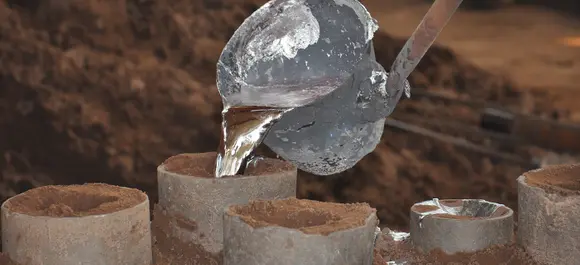Mobile:+86-311-808-126-83
Email:info@ydcastings.com
15mm End Feed Cap for Plumbing Applications and Installations
Understanding the 15mm End Feed Cap A Comprehensive Overview
In the realm of plumbing and piping systems, components like fittings, connectors, and caps play crucial roles in ensuring secure and efficient fluid transport. Among these components, the 15mm end feed cap is particularly significant. This article explores what a 15mm end feed cap is, its applications, installation procedures, and the advantages it offers in various plumbing scenarios.
What is a 15mm End Feed Cap?
A 15mm end feed cap is a type of plumbing fitting designed to close the end of a copper or plastic pipe with a 15mm diameter. Made from durable materials such as copper, these caps are specifically engineered to create a reliable seal, preventing leaks and enabling the effective containment of water and other fluids within a piping system. The end feed aspect refers to the method by which the fitting is attached to the pipe; the pipe is inserted into the fitting end and soldered to create a tight and leak-proof joint.
Applications of 15mm End Feed Caps
The 15mm end feed cap is widely used in various plumbing systems, including residential, commercial, and industrial applications. Some common uses include
1. Pipe Termination As the name suggests, the primary purpose of the end feed cap is to seal the end of a pipe. Whether you have capped off an unused water line in a home or closed a loop in a heating system, these caps provide an ideal solution.
2. Maintenance and Repairs In plumbing repairs, end feed caps are often used to temporarily or permanently close off sections of pipe that need to be repaired or replaced. This assists in maintaining system pressure and prevents water loss.
3. Heating Systems In heating applications, particularly with central heating systems, the 15mm end feed cap can be employed to seal off parts of the heating circuit. This is essential for the proper functioning of various components of the heating system.
Installation Procedures
Installing a 15mm end feed cap requires some essential tools and techniques to ensure a secure fit
1. Preparation Cut the copper pipe to the desired length using a pipe cutter. Ensure the cut is clean and free from burrs to facilitate a tight joint.
2. Cleaning Both the outside of the pipe and the inside of the cap should be thoroughly cleaned using a wire brush or cleaning pad. This step is vital for achieving a good solder joint.
15mm end feed cap

3. Flux Application Apply soldering flux to the pipe and the inside of the cap. This helps in promoting a strong bond during the soldering process.
4. Assembly Insert the end of the pipe into the end feed cap, ensuring a snug fit.
5. Soldering Heat the joint using a propane torch. Once the flux begins to bubble, apply the solder around the joint, allowing it to flow into the gap. Remove heat and allow it to cool.
6. Inspection After cooling, visually inspect the joint for any gaps or insufficient solder coverage. A successful installation should be smooth and completely sealed.
Advantages of Using 15mm End Feed Caps
There are several advantages to using 15mm end feed caps in plumbing systems
- Reliability Copper caps, in particular, provide excellent longevity and resistance to corrosion, making them a robust choice for piping systems.
- Ease of Use The end feed design allows for a straightforward installation process, making it accessible even for those with moderate DIY experience.
- Versatility These caps can be used in a variety of applications, from simple household plumbing to complex industrial systems.
- Cost-Effectiveness Generally, end feed caps are relatively inexpensive, especially given their utility and longevity.
Conclusion
The 15mm end feed cap is a small yet immensely important component of piping systems. Understanding its function, installation procedures, and advantages can significantly enhance the efficiency and reliability of your plumbing projects. Whether in residential, commercial, or industrial applications, the appropriate use of these fittings can lead to a better-performing plumbing system, helping prevent leaks and ensuring the safe transport of fluids. As with any plumbing task, proper techniques and materials are critical in achieving lasting results.
-
Impeller Technology That Powers Precision in Pump SystemsNewsMay.22,2025
-
Valve Durability Begins with Quality Cast Iron ComponentsNewsMay.22,2025
-
Performance Cooling with Advanced Automobile Water Pump SolutionsNewsMay.22,2025
-
How Motor Housing and Oil Pans Shape Engine PerformanceNewsMay.22,2025
-
How Metal Castings Drive Modern Manufacturing EfficiencyNewsMay.22,2025
-
Exploring the Engineering Behind Valve Body CastingsNewsMay.22,2025











